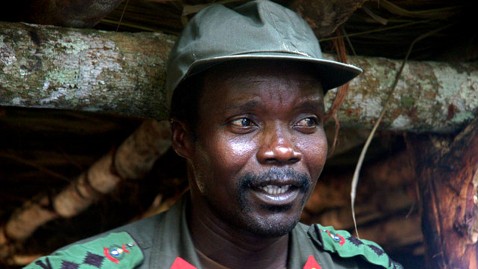'Kony 2012' Sequel Has Less Emotion, More Details

Joseph Kony
Kony the sequel is out.
A month after the California-based advocacy group Invisible Children released the "Kony 2012? video that became an instant internet sensation, "Kony 2012 Part II: Beyond Famous" has been released.
The new video is a 20 minute response to both the incredible level of interest in the social media campaign and the deluge of criticism that followed.
Absent from the "Kony 2012? sequel is the man who has been called the "genius" behind the original film. Co-founder and filmmaker Jason Russell directed and narrated the wildly popular video. He was hospitalized for a psychological meltdown a couple of weeks after his film became an internet sensation, walking the streets of San Diego naked, yelling, and slapping his hands on the pavement. Invisible Children said he is still recovering, and it will be several months before he is able to return to work with the organization.
While the new video doesn't carry quite the same emotional punch as the first film, it does a better job explaining the current conflict created by African warlord Joseph Kony and how it believes the millions of people who watched the video can have an impact.
"We have hardly been able to keep up," said Invisible Children CEO Ben Keesey in the new video showing staff trying to answer the thousands of phone calls that came into the group's San Diego headquarters immediately after the first Kony film was launched.
The sequel shows snippets of the immense media response to the internet film's success, including some of the main criticism from commentators who said it oversimplified the conflict and called supporters "white Westerners getting on the bandwagon" without an understanding of the issue.
"The world should know that this conflict is complex. If it wasn't, it wouldn't have gone on for 26 years," acknowledged Invisible Children Uganda Country Director Jolly Okat.
Kony and his Lord's Resistance Army are notorious for raiding villages, mutilating victims, and kidnapping children who are forced to become soldiers and sex slaves. "Kony 2012 Part II" makes clear that Kony's army left northern Uganda in 2006, and the country is peaceful again. That appears to be a response to criticism of the film from government officials in Uganda who fear the country will lose out on tourism dollars if people aren't aware the war there is over.
The sequel uses graphics to show where Kony's forces are still terrorizing citizens in three neighboring central African countries. It explains the work Invisible Children is doing beyond raising awareness, and it stresses that work is in support of initiatives called for and carried out by Africans who live in the affected areas.
The film also celebrates recent resolutions introduced in Congress calling for increased U.S. funding of efforts by African regional armies to capture Kony, and it calls on supporters to keep up the pressure on policymakers by taking action on April 20.
"We will earn the right to be heard globally by acting locally," the film promises. "We will turn this digital revolution into something more."
Invisible Children initially intended the "Cover the Night" event on April 20to focus on raising awareness by asking supporters to put signage around their communities. It is now encouraging supporters to also find ways to volunteer. It recently posted several short tutorial videos on how to remove graffiti, hold a car wash or clean up a park.
After the phenomenal early success of the "Kony 2012? social media campaign, Keesey told the Associated Press he knows it will be a challenge to retain such a high level of interest, but said Invisible Children won't stop trying.
"Our goal is just to create compelling stories to bring back what the point is, which is right now there are people living in fear of violence and being attacked by the LRA and we need to be reminded of that."